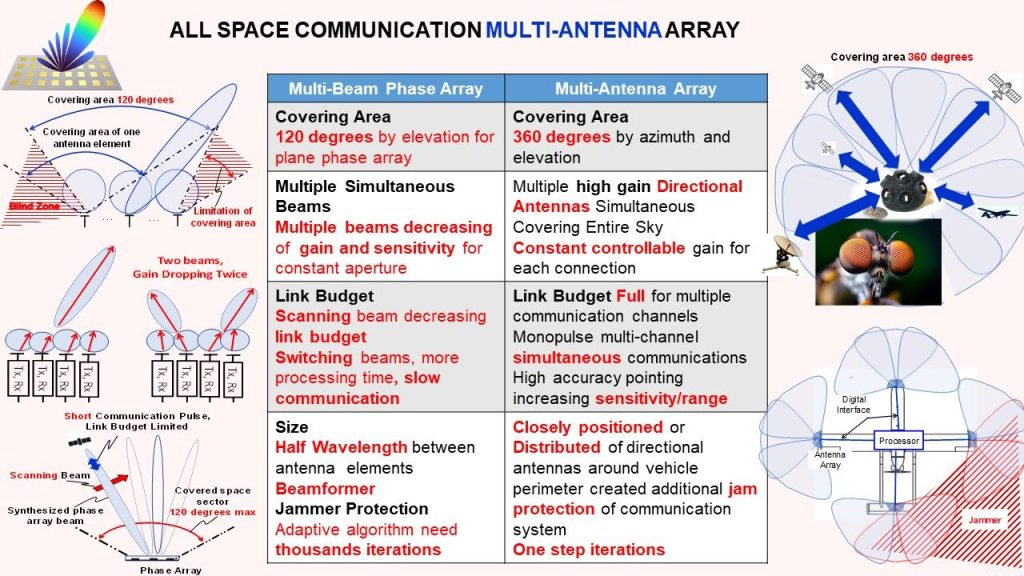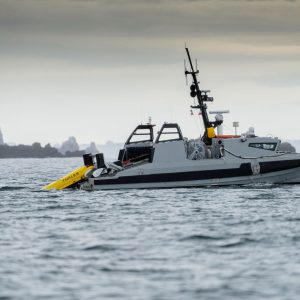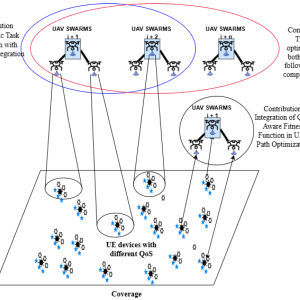Multi-antenna arrays are becoming increasingly common in space communication systems due to their many advantages. These advantages include increased gain, spatial diversity, beamforming, and jammer resistance.
Increased gain means that a multi-antenna array can focus the signal in a specific direction, which allows the signal to travel farther and reach its destination more reliably. Spatial diversity refers to the ability of a multi-antenna array to receive signals from different directions. This can be useful in the event of interference or fading, as it allows the system to continue to operate even if one of the antennas is affected. Beamforming is the process of steering the signal in a specific direction. This can be useful for applications such as satellite navigation and radar, where it is important to focus the signal on a specific target. Jammer resistance means that a multi-antenna array can be used to mitigate the effects of jamming, which can be a major problem in space communication.

The image shows a poster that highlights the advantages of multi-antenna arrays in space communication. The poster lists several advantages, including:
- Increased gain: A multi-antenna array can focus the signal in a specific direction, which increases the gain and allows the signal to travel farther.
- Spatial diversity: A multi-antenna array can receive signals from different directions, which can help to improve the reliability of the communication link in the event of interference or fading.
- Beamforming: A multi-antenna array can be used to steer the signal in a specific direction, which can be useful for applications such as satellite navigation and radar.
- Jammer resistance: A multi-antenna array can be used to mitigate the effects of jamming, which can be a major problem in space communication.
The poster also mentions that multi-antenna arrays are becoming increasingly common in space communication systems. This is due to the fact that the advantages of multi-antenna arrays outweigh the disadvantages, such as the increased cost and complexity.
Here are some additional details about the advantages of multi-antenna arrays in space communication:
- Increased gain: The gain of an antenna is a measure of its ability to focus the signal in a specific direction. A multi-antenna array can focus the signal more effectively than a single antenna, which results in an increase in gain. This is important for space communication, as it allows the signal to travel farther and reach its destination more reliably.
- Spatial diversity: Spatial diversity refers to the ability of a multi-antenna array to receive signals from different directions. This can be useful in the event of interference or fading, as it allows the system to continue to operate even if one of the antennas is affected.
- Beamforming: Beamforming is the process of steering the signal in a specific direction. This can be useful for applications such as satellite navigation and radar, where it is important to focus the signal on a specific target.
- Jammer resistance: A jammer is a device that is used to interfere with a communication signal. Multi-antenna arrays can be used to mitigate the effects of jamming, as they can be designed to reject the jamming signal.
Overall, multi-antenna arrays offer a number of advantages for space communication. These advantages are becoming increasingly important as the demand for space communication grows. In conclusion, multi-antenna arrays offer a number of advantages for space communication. These advantages include increased gain, spatial diversity, beamforming, and jammer resistance. As the demand for space communication grows, multi-antenna arrays are becoming increasingly common in space communication systems.











